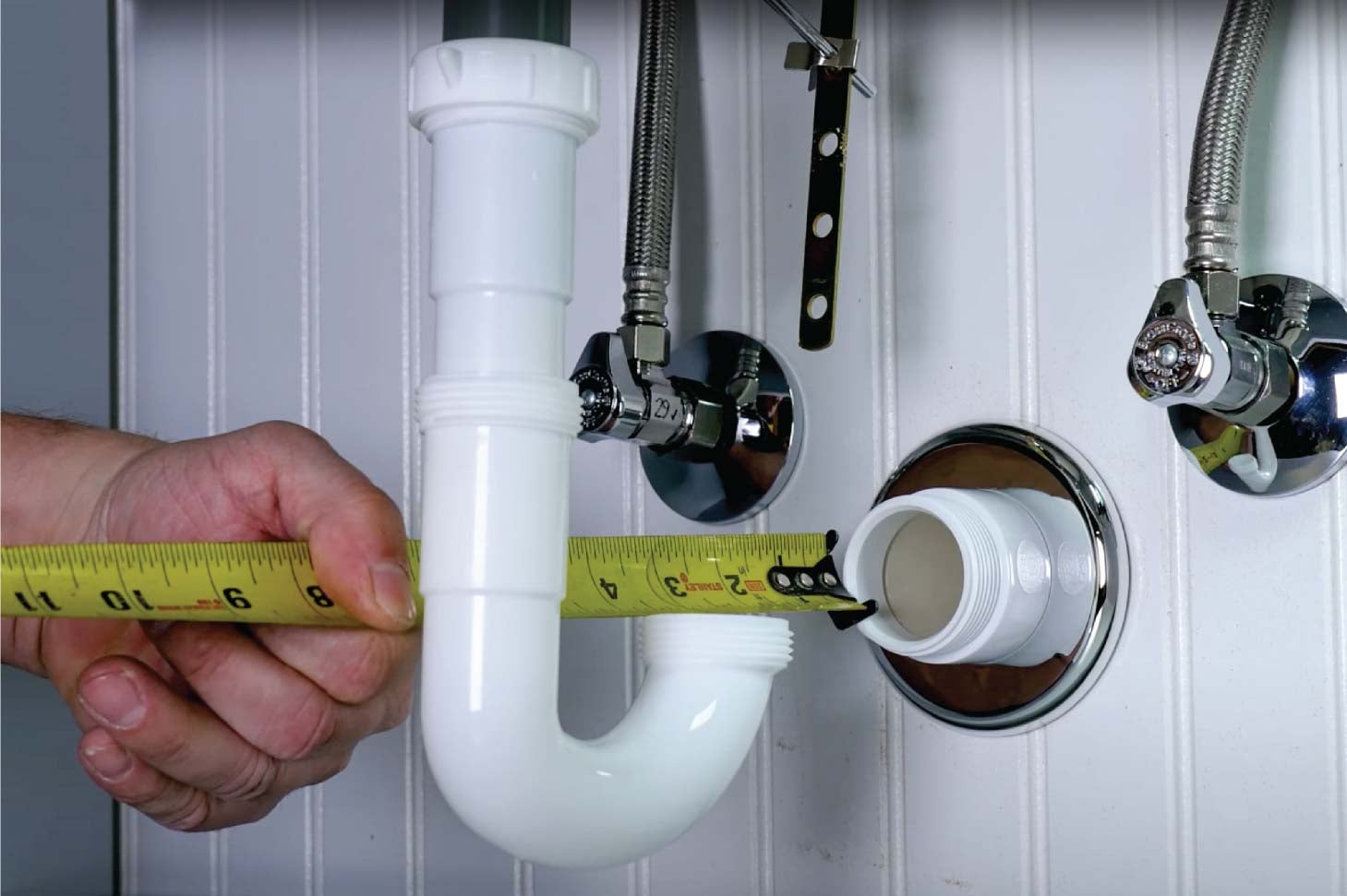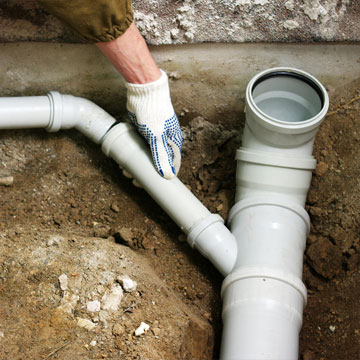Understanding The Structure of Your House's Plumbing System
Understanding The Structure of Your House's Plumbing System
Blog Article
Any individual seems to have their own piece of advice on the subject of Plumbing Installation 101: All You Need to Know.

Recognizing just how your home's pipes system functions is essential for every homeowner. From providing tidy water for drinking, cooking, and bathing to safely eliminating wastewater, a properly maintained pipes system is critical for your household's health and convenience. In this extensive overview, we'll discover the elaborate network that makes up your home's pipes and offer pointers on maintenance, upgrades, and taking care of usual concerns.
Introduction
Your home's pipes system is more than simply a network of pipelines; it's a complex system that guarantees you have access to tidy water and efficient wastewater elimination. Understanding its parts and how they interact can help you protect against expensive repairs and make certain everything runs efficiently.
Standard Components of a Pipes System
Pipes and Tubing
At the heart of your plumbing system are the pipelines and tubing that carry water throughout your home. These can be constructed from different products such as copper, PVC, or PEX, each with its advantages in regards to toughness and cost-effectiveness.
Fixtures: Sinks, Toilets, Showers, and so on.
Fixtures like sinks, bathrooms, showers, and bathtubs are where water is utilized in your home. Comprehending how these components attach to the plumbing system aids in diagnosing troubles and planning upgrades.
Shutoffs and Shut-off Factors
Valves manage the circulation of water in your plumbing system. Shut-off shutoffs are essential throughout emergencies or when you need to make fixings, permitting you to isolate parts of the system without interrupting water circulation to the entire home.
Water System
Main Water Line
The main water line links your home to the metropolitan water system or a private well. It's where water enters your home and is distributed to numerous components.
Water Meter and Pressure Regulatory Authority
The water meter actions your water usage, while a pressure regulatory authority ensures that water moves at a safe pressure throughout your home's plumbing system, avoiding damage to pipelines and components.
Cold Water vs. Warm water Lines
Understanding the difference in between cold water lines, which provide water straight from the main, and hot water lines, which carry heated water from the hot water heater, aids in troubleshooting and planning for upgrades.
Drain System
Drain Pipes and Traps
Drain pipes lug wastewater away from sinks, showers, and toilets to the drain or sewage-disposal tank. Traps stop drain gases from entering your home and additionally trap debris that can trigger clogs.
Ventilation Pipes
Ventilation pipelines permit air into the drain system, avoiding suction that might slow drainage and trigger traps to vacant. Appropriate air flow is crucial for maintaining the integrity of your plumbing system.
Significance of Proper Drainage
Ensuring proper water drainage protects against backups and water damages. Consistently cleansing drains pipes and preserving traps can prevent pricey repair services and prolong the life of your plumbing system.
Water Heating Unit
Types of Water Heaters
Hot water heater can be tankless or typical tank-style. Tankless heating systems warmth water as needed, while storage tanks keep heated water for immediate usage.
Upgrading Your Plumbing System
Reasons for Updating
Updating to water-efficient components or replacing old pipes can improve water quality, reduce water costs, and enhance the value of your home.
Modern Plumbing Technologies and Their Advantages
Check out technologies like clever leak detectors, water-saving toilets, and energy-efficient water heaters that can conserve cash and reduce ecological impact.
Price Considerations and ROI
Compute the ahead of time expenses versus long-term financial savings when taking into consideration pipes upgrades. Lots of upgrades spend for themselves with reduced energy expenses and less repairs.
Just How Water Heaters Connect to the Plumbing System
Recognizing exactly how hot water heater link to both the cold water supply and hot water distribution lines assists in diagnosing concerns like insufficient warm water or leaks.
Upkeep Tips for Water Heaters
Frequently purging your water heater to remove debris, checking the temperature setups, and examining for leakages can extend its life-span and boost power efficiency.
Typical Pipes Issues
Leakages and Their Causes
Leakages can occur due to aging pipelines, loosened installations, or high water pressure. Addressing leaks immediately avoids water damages and mold development.
Obstructions and Obstructions
Blockages in drains pipes and bathrooms are often brought on by flushing non-flushable items or an accumulation of oil and hair. Utilizing drainpipe screens and bearing in mind what drops your drains pipes can avoid blockages.
Signs of Plumbing Troubles to Watch For
Low tide stress, slow drains pipes, foul odors, or abnormally high water bills are indications of possible plumbing issues that should be attended to without delay.
Plumbing Upkeep Tips
Normal Evaluations and Checks
Set up yearly pipes evaluations to capture concerns early. Look for indications of leakages, deterioration, or mineral buildup in faucets and showerheads.
Do It Yourself Upkeep Tasks
Straightforward jobs like cleansing tap aerators, looking for commode leakages making use of color tablets, or insulating exposed pipes in cold climates can prevent significant pipes concerns.
When to Call a Specialist Plumbing Professional
Know when a pipes problem needs expert know-how. Attempting complicated repair work without proper knowledge can lead to even more damage and higher repair work prices.
Tips for Lowering Water Usage
Easy practices like fixing leakages without delay, taking much shorter showers, and running full loads of laundry and recipes can preserve water and reduced your utility bills.
Eco-Friendly Plumbing Options
Take into consideration sustainable plumbing materials like bamboo for floor covering, which is durable and green, or recycled glass for counter tops.
Emergency Readiness
Actions to Take During a Plumbing Emergency situation
Know where your shut-off shutoffs are located and how to switch off the water in case of a burst pipe or significant leakage.
Significance of Having Emergency Calls Useful
Keep call info for local plumbing technicians or emergency services conveniently available for quick action during a pipes crisis.
Ecological Influence and Conservation
Water-Saving Components and Appliances
Mounting low-flow faucets, showerheads, and bathrooms can significantly minimize water usage without compromising performance.
Do It Yourself Emergency Fixes (When Suitable).
Momentary solutions like using air duct tape to patch a leaking pipeline or putting a bucket under a leaking faucet can reduce damages until an expert plumber shows up.
Verdict.
Comprehending the makeup of your home's plumbing system equips you to preserve it effectively, saving money and time on fixings. By adhering to regular upkeep regimens and remaining educated regarding modern-day plumbing technologies, you can ensure your plumbing system operates successfully for years to come.
HOW YOUR PLUMBING SYSTEM WORKS
Which Pipes Do What?
Blue lines = fresh water supply entering the building Red lines = hot water supply entering the building Grey lines = pipes carrying waste away from the building and venting pipes carrying gases away from the building (through the roof) YOUR MAIN PLUMBING SYSTEMS
There are two main plumbing systems that support your home s basic plumbing needs one that brings clean water into your home, and one that sends dirty water away from your home. Connected to the toilet, bath, shower, and other faucets in your home, these two systems keep your water flowing in the right directions.
ACCESSING FRESH WATER
Fresh and clean water is brought into your home through the main water supply line . Filtered through one pipe, this water is pressured to flow into the various fixtures in your home at any given time.
This water can be sourced from a well located on your property, a pond or river (mostly cottages), or, as in most cases, from the city s municipal water treatment centre. However, it is important to note that water that is untreated, such as the water siphoned from ponds or rivers, may not be safe to drink. Personal water supplies always need to be treated for hardness and contaminants before consumed.
MUNICIPAL WATER SUPPLIES
Improve taste and odour Remove sediment Eliminate hardness Reduce chlorine COLD WATER SUPPLY VS. HOT WATER SUPPLY
Cold water flows into your home or building through the service line, which then distributes hot or cold water to your fixtures. This line is most commonly run through a central column that runs floor to floor. Hot water runs in short and straight pipes as the longer the pipeline, the more heat that will be lost in the transfer. Having shorter pipes also allows residents to access hot water more quickly.
WASTE WATER SYSTEM
Your wastewater system is divided into two parts pipes that send wastewater away from your home and venting pipes that send sewer gas away from your home. Sewage water travels through pipes that flush the water and waste towards local sewers that are operated and managed by your city or town. Most sewer systems rely on gravity to move the wastewater to where it needs to go.
The further away from your toilet or sink, the larger wastewater pipes become. This allows for waste to be disposed of from various parts of your home or business at once without pipe blockages. The angle and flow of these pipes are also essential for keeping your waste pipes clear of build up.
https://harrisplumbing.ca/how-your-home-plumbing-system-works/

I hope you enjoyed our article on Understanding Your Home's Plumbing Anatomy. Thanks so much for spending some time to browse our piece. Make sure you take the time to distribute this entry if you enjoyed it. I praise you for being here. Come back soon.
Free Estimate Report this page